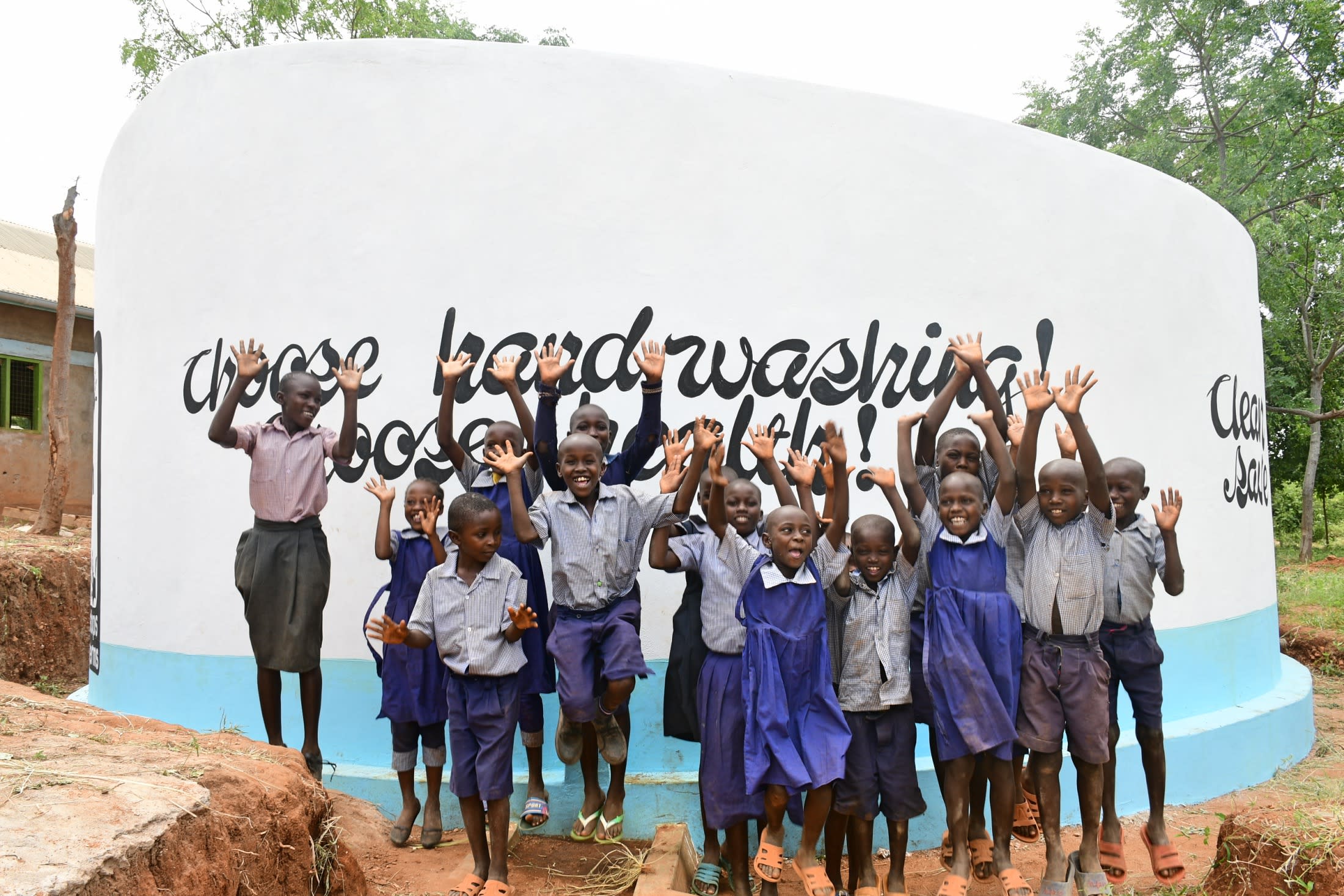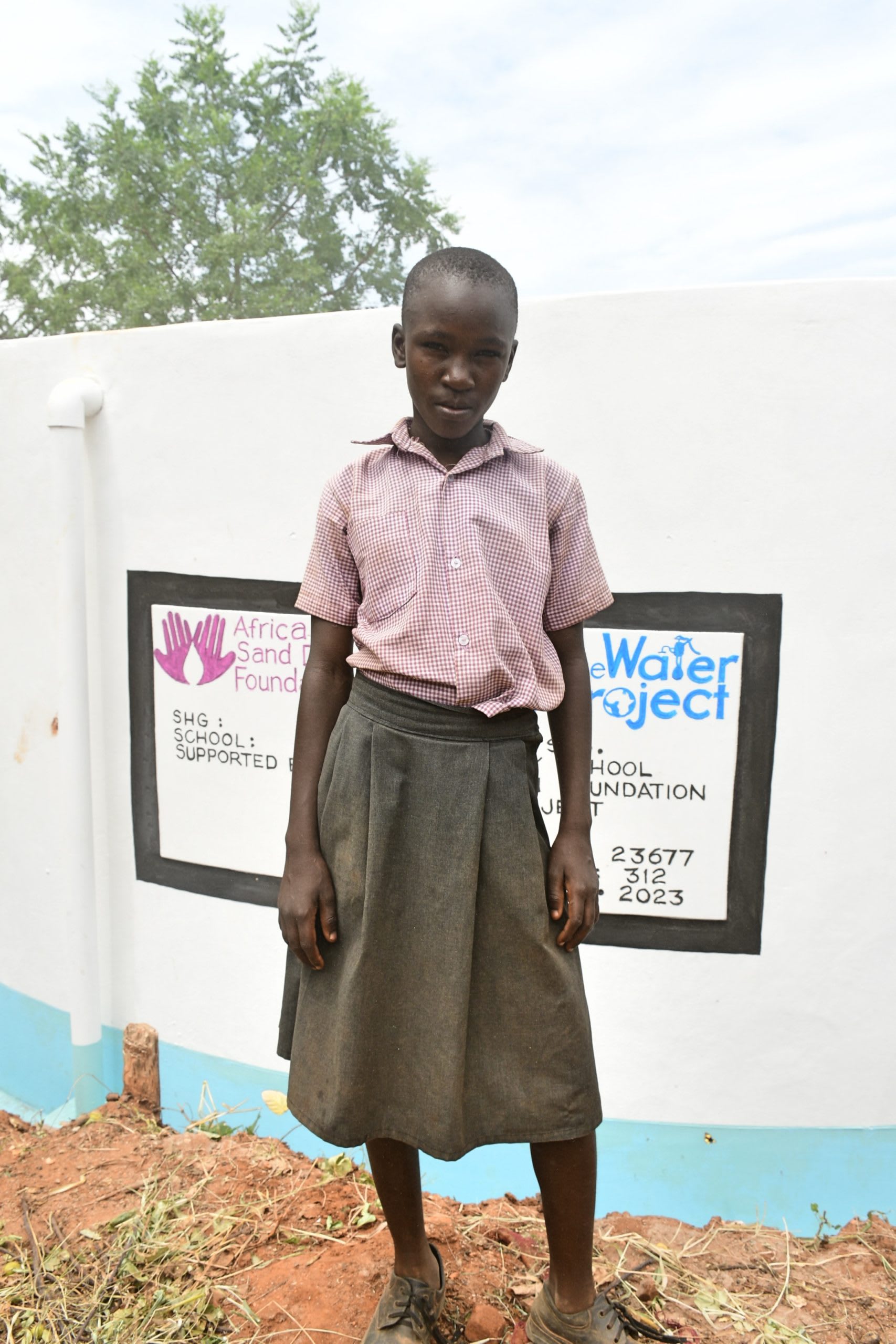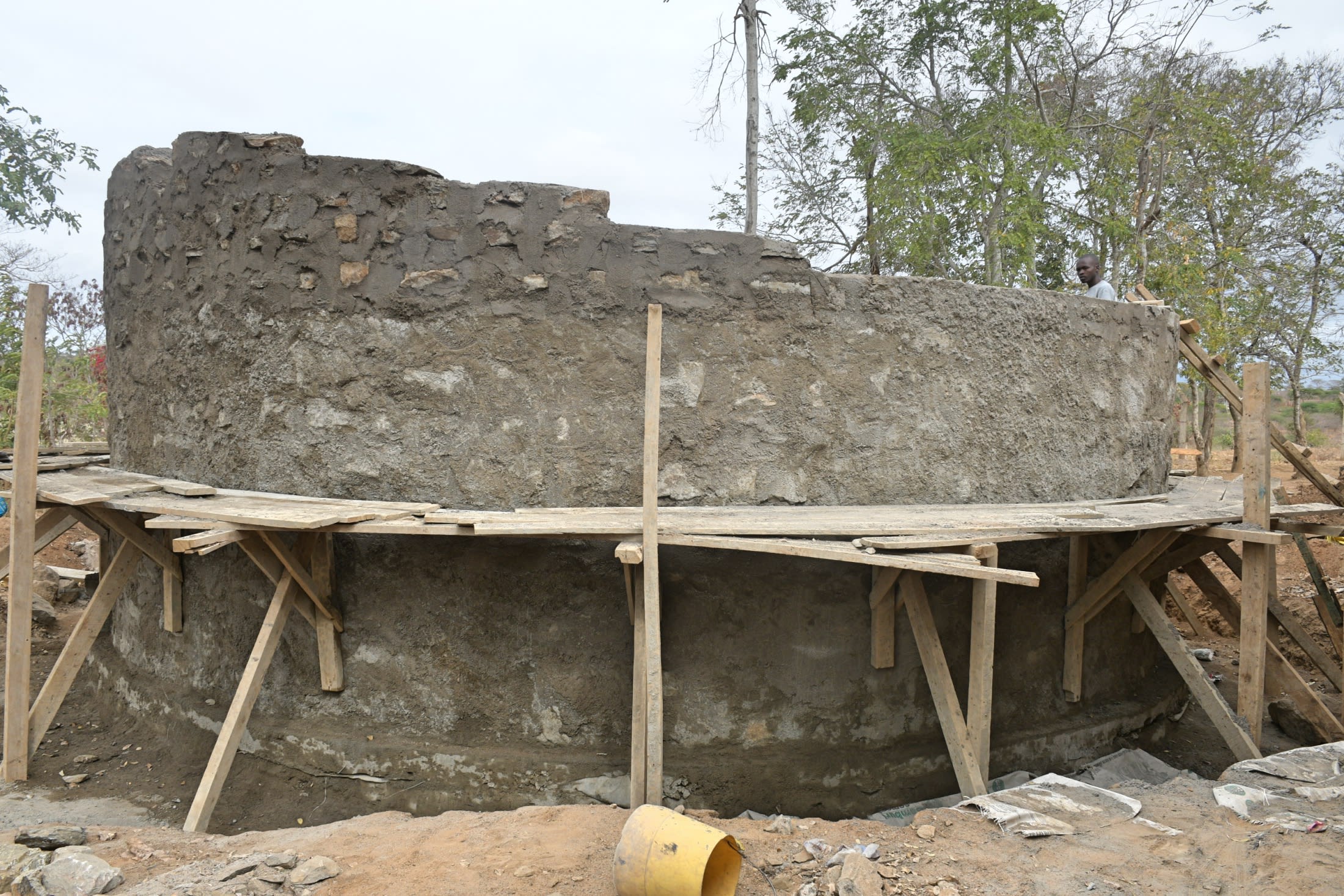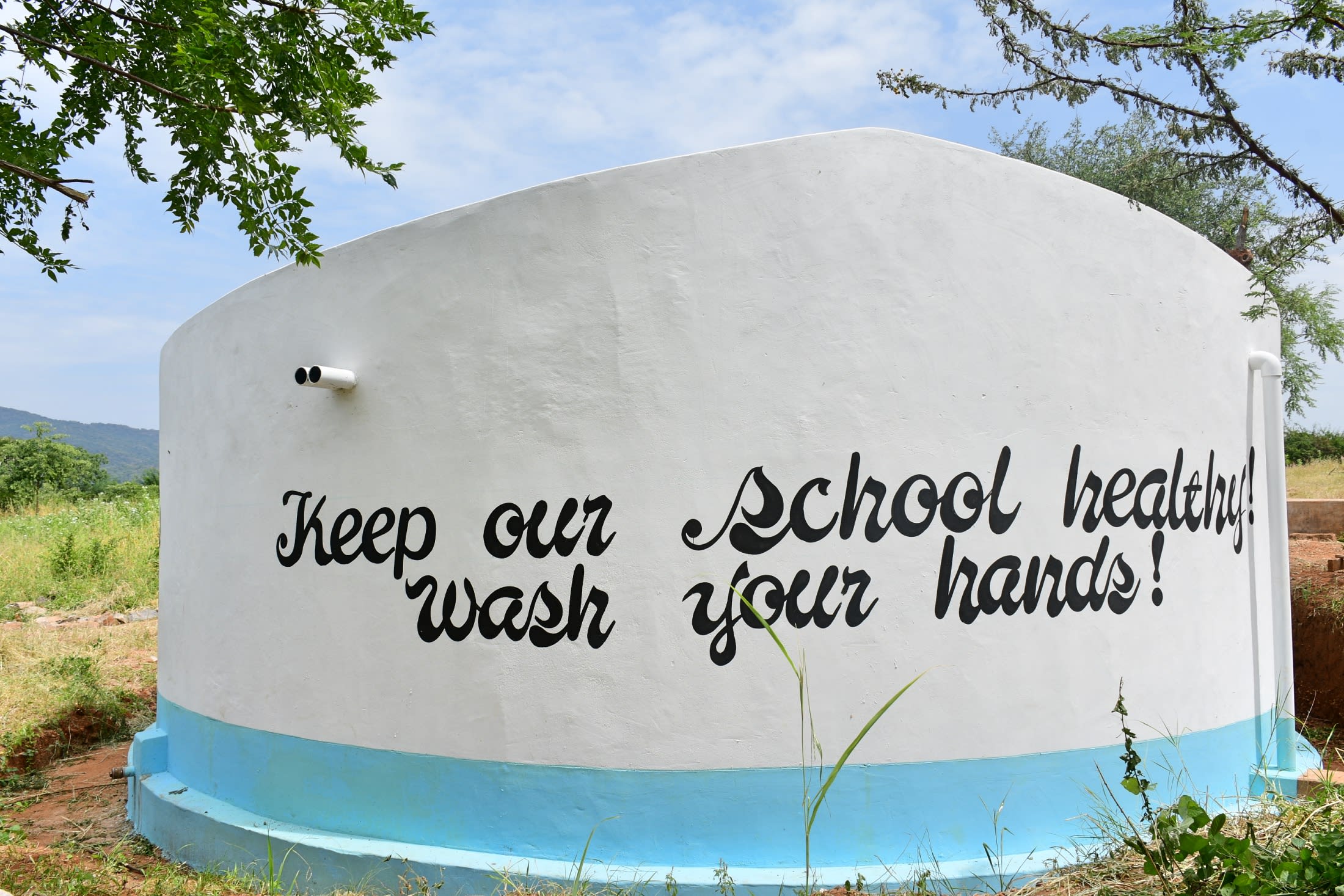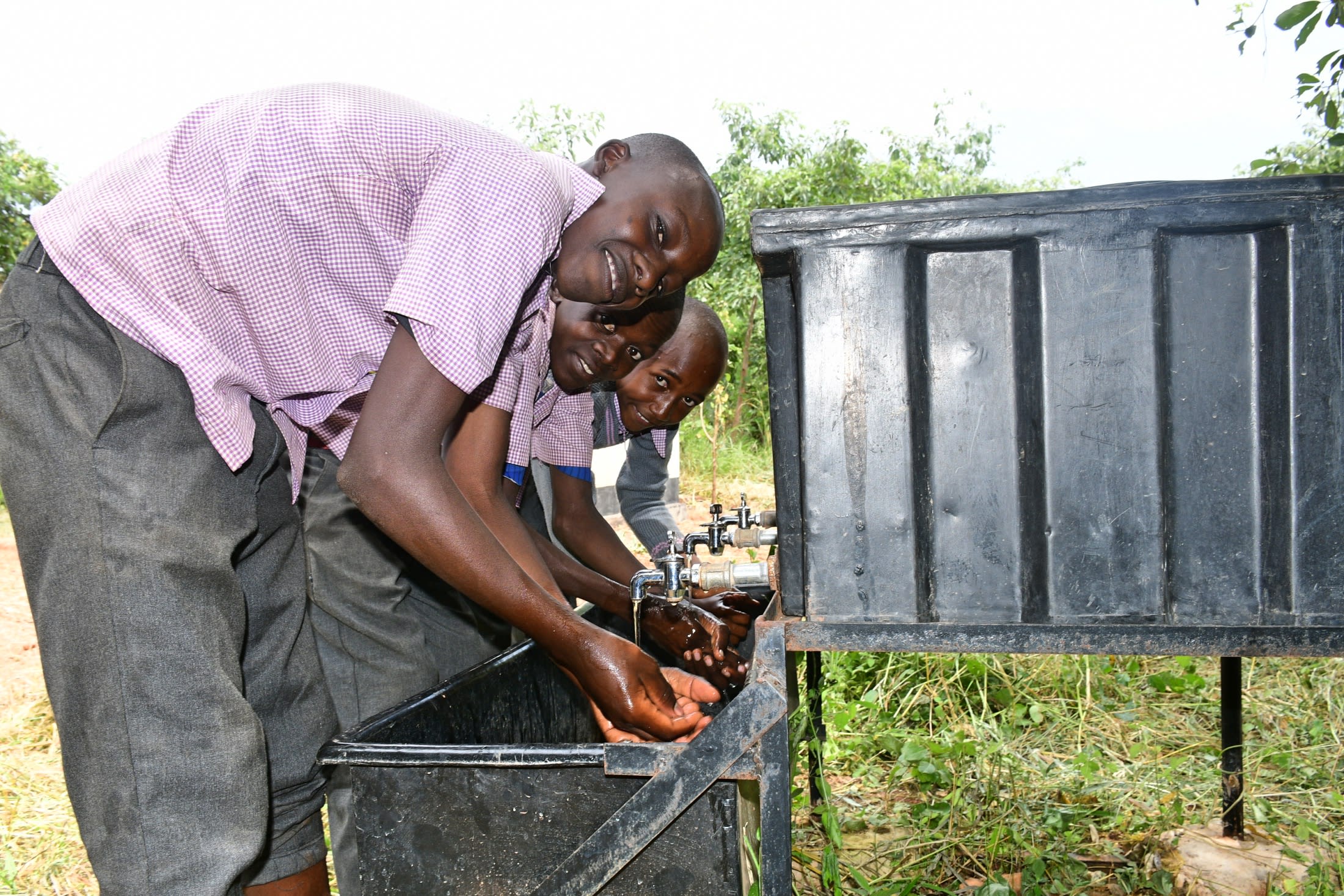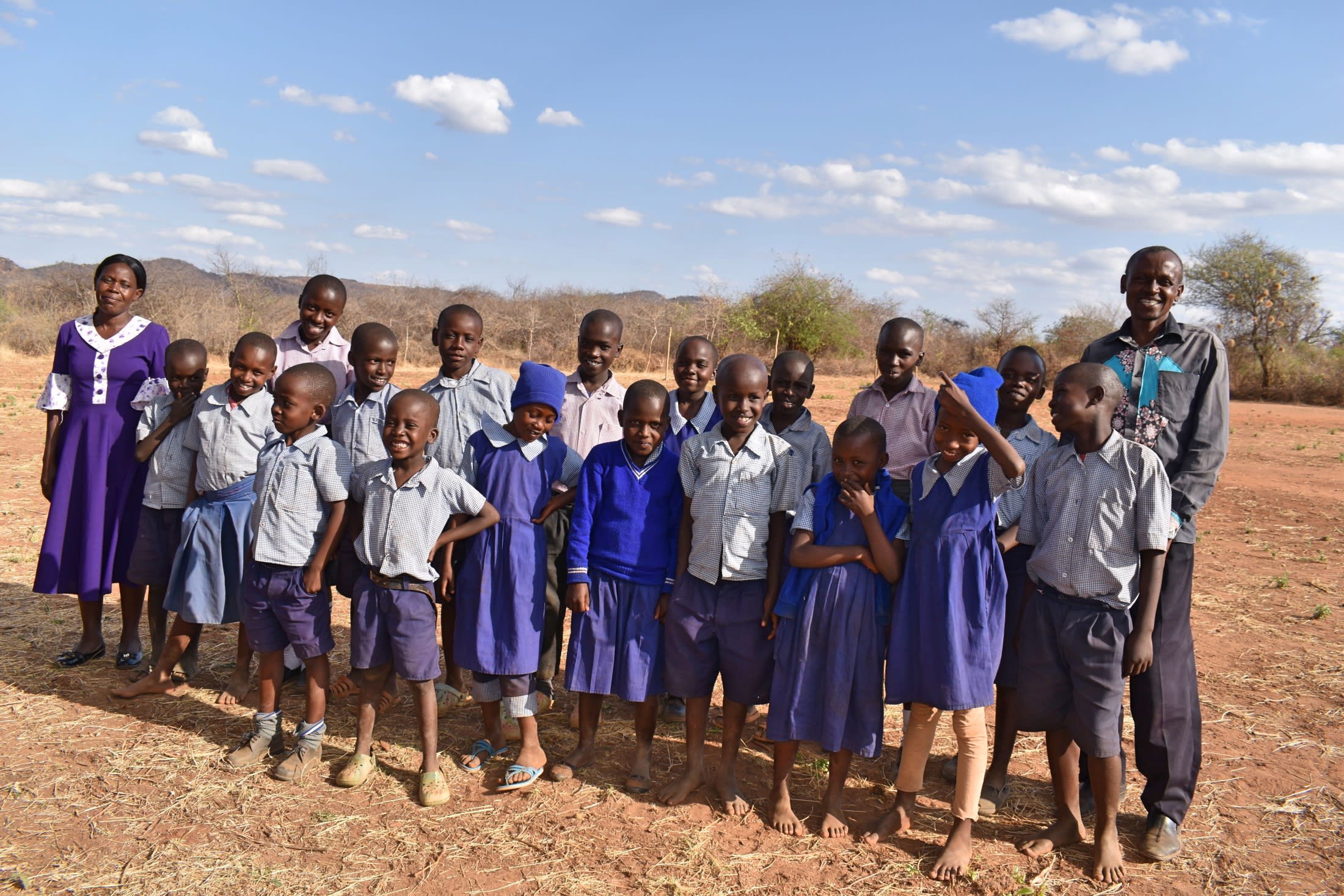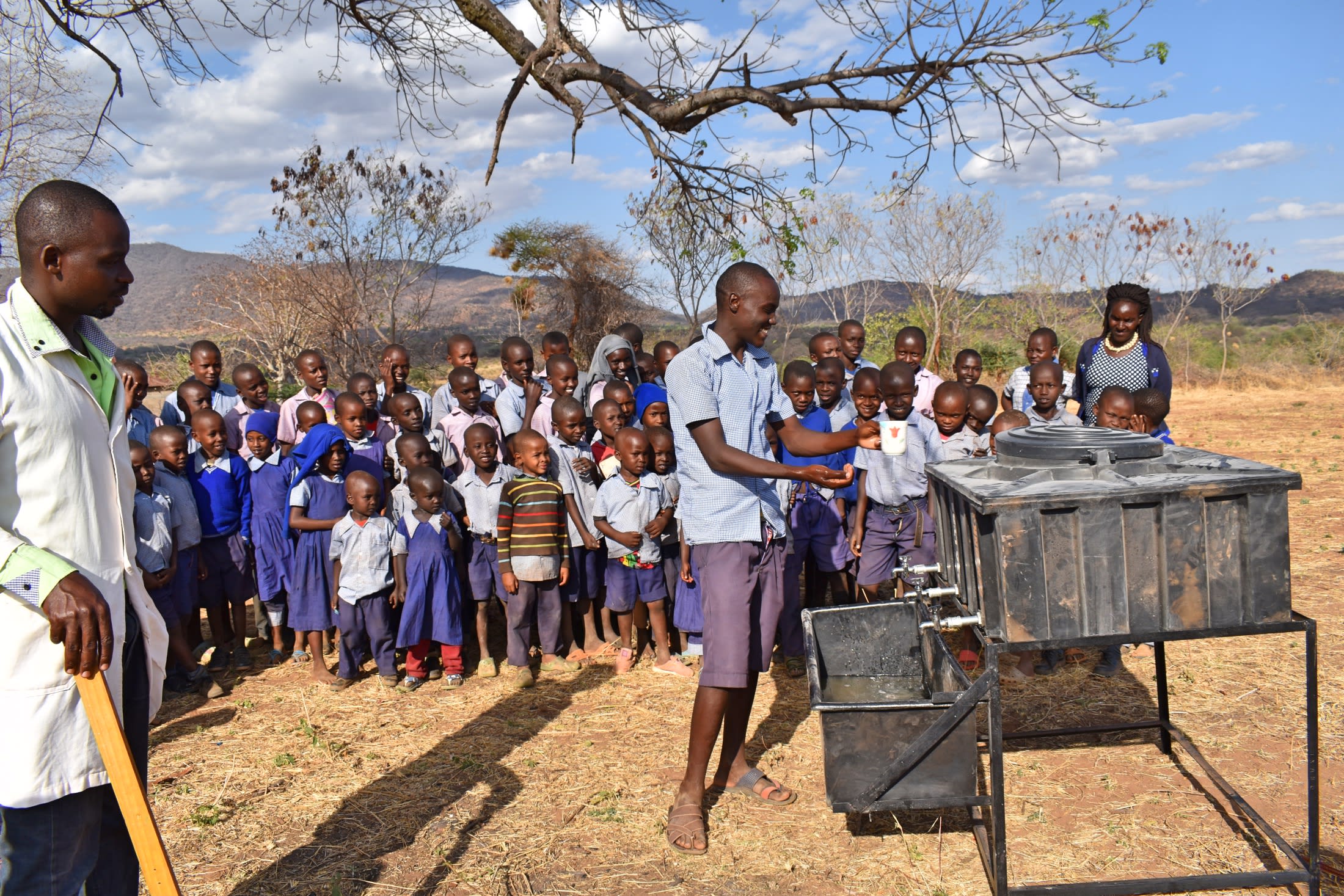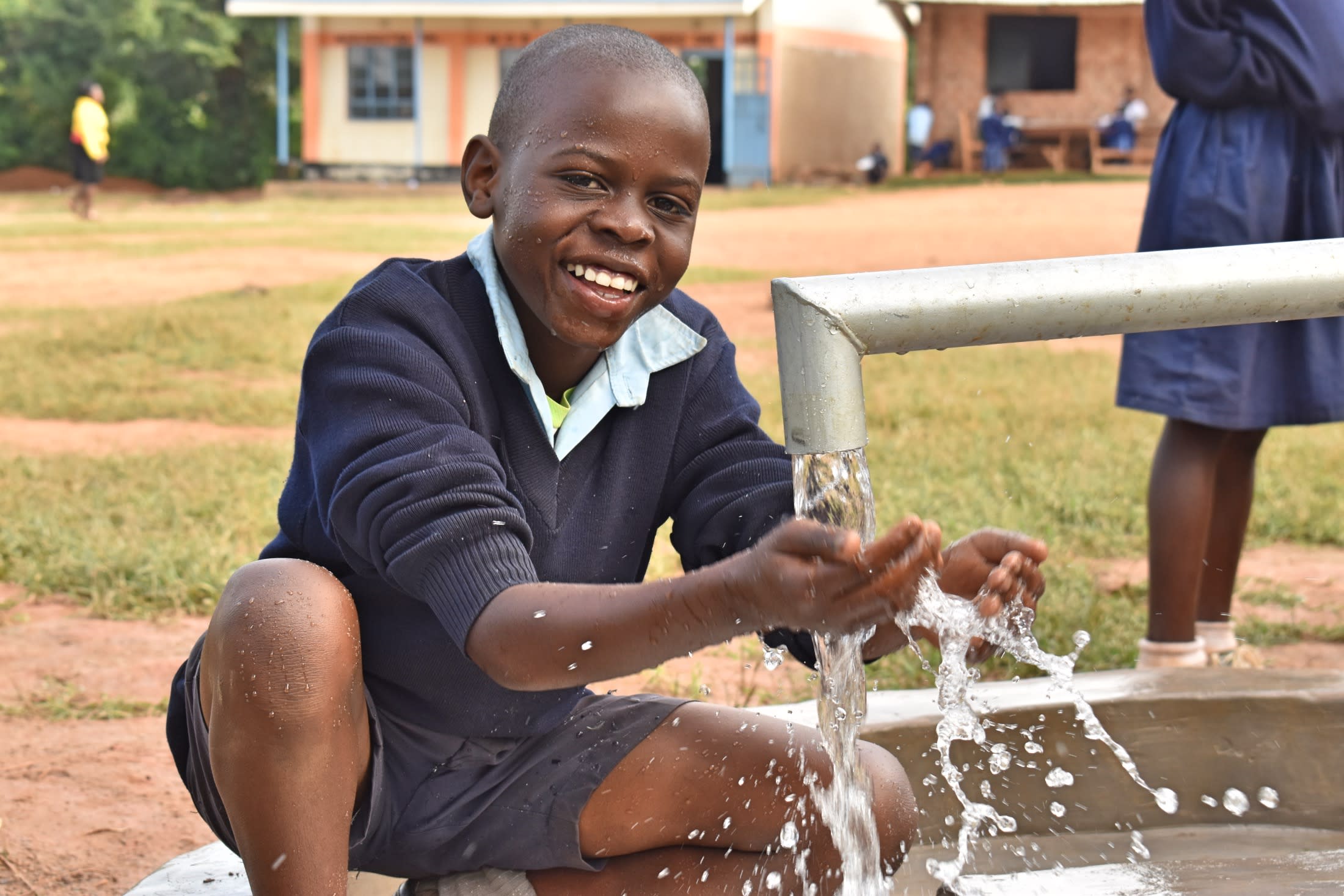Tondora Primary School opened in 1998 through the persistence of parents who wanted their children to receive an education. Today, there are 119 students and 11 teachers, but the school still lacks a reliable water source that can provide the necessary water needed all year round for drinking, cooking, and keeping the school hygienic.
Every school day, the same ritual happens. Pupils must report to school by 7 am with a 5L container of water they've collected from community water sources, most often river scoop holes along the way. Then the students come together for an assembly and empty their water into the school's storage containers. And sadly, those who fail to bring water receive punishment.

But as you can imagine, the water children collect from open scoop holes in dry riverbeds is exposed to many forms of contamination, putting the health of everyone who consumes it at risk from water-related illnesses.
"Students reported cases of stomachaches, headaches, typhoid, and amoeba. Like last week when a child was taken to Kamuwongo Dispensary," said our field officer Alex Koech.
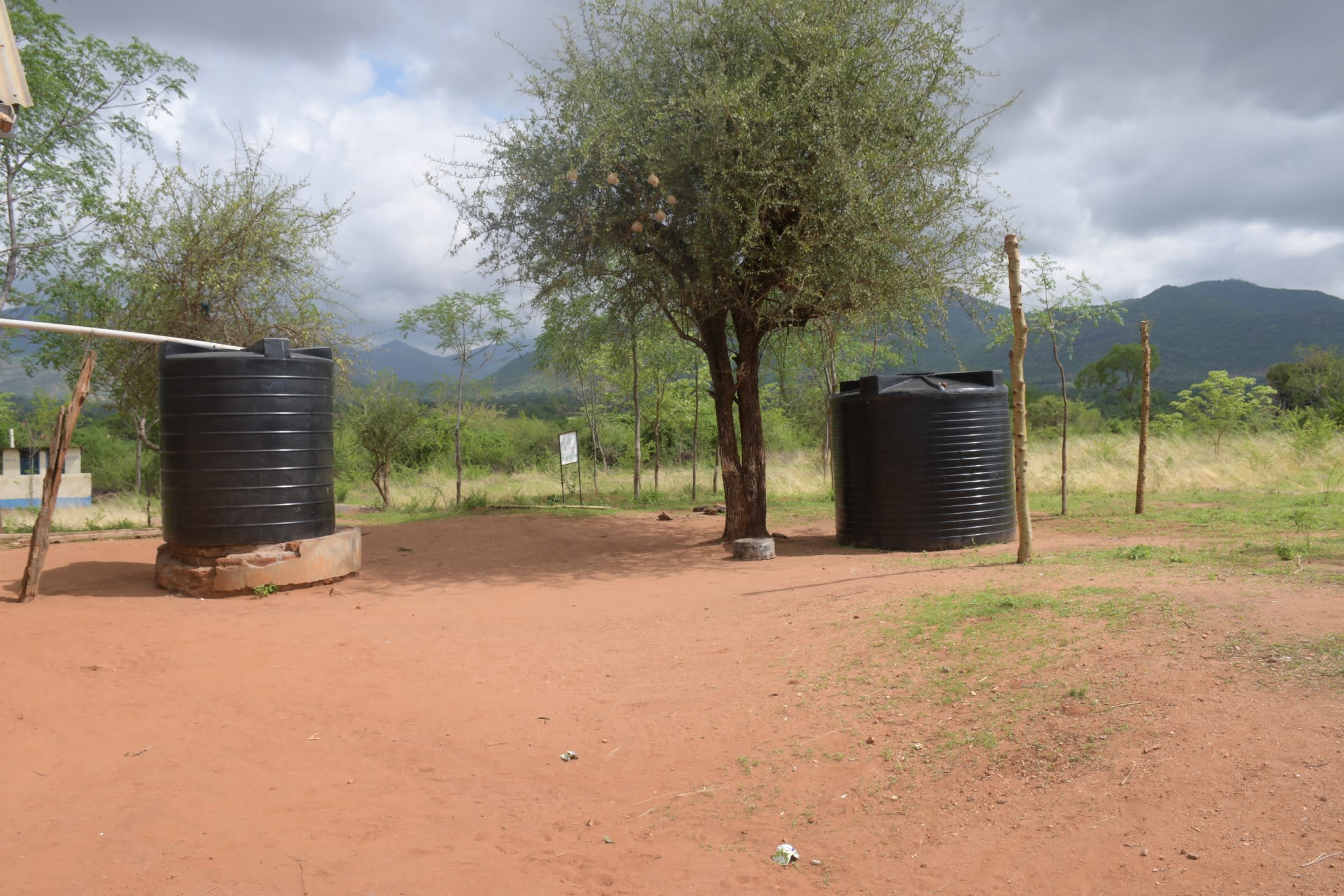
There are a couple of small plastic rain tanks on the school campus, but the amount of water they can collect during the rainy season cannot sustain the school, as the water only lasts for about three weeks after each rainstorm, then they inevitably run dry.
So even with the children fulfilling their arduous duty and the small rain tanks collecting water, there is never enough to meet the demand. As a result, other areas suffer. School meals are delayed, classrooms are rarely cleaned, and latrines cannot be adequately maintained, making for a less-than-ideal learning situation.
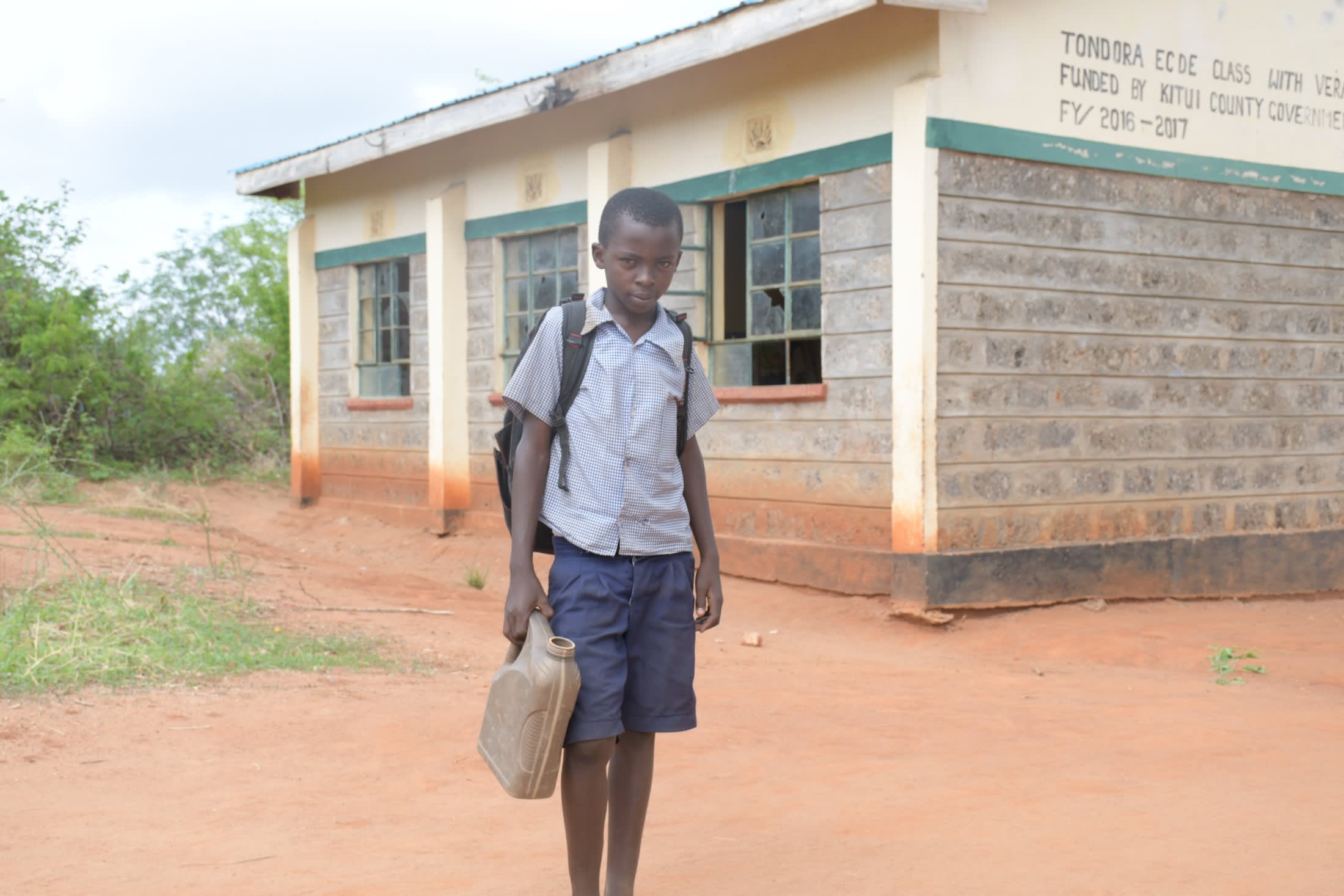
"We carry water to school on a daily basis. It is not easy, and sometimes you arrive in school too tired to actively engage in class activities. Coming [to] school is never fun like it can be when you come less burdened," said 13-year-old Isaac M., seen above carrying his jug of water.

"We incur poor academic performances, and the management of the school is difficult because we do not have a reliable water supply. Everyone carries their own drinking water, including teachers," said 52-year-old headteacher Joyce Mumbe (seen above).
“In addition to the necessity of water to maintain personal and environmental hygiene, reducing student dehydration in schools has been associated with improved cognitive abilities.” - UNICEF
A new, large rain tank on their school campus should hold sufficient water to remove the burden of finding and collecting water from students. Then, hopefully, they will regain their time and energy to focus on learning.
Rain Tank
We will build a 104,000-liter rain tank for this school, making the others look tiny in comparison. Because of how rarely it rains in Southeastern Kenya, this tank's large volume is designed to store as much water as possible during the seasonal rains, making more water available through the dry months. This water will benefit the students, teachers, and supplementary staff.
Parents will mobilize the materials needed for construction, including sand, stones, and water. They will also lend their strength and time to help with the construction. We will complement their materials with a skilled artisan to lead the project in addition to providing the tools, lumber, metal, cement, and gutter system.
As soon as the tank has time to cure, it can begin collecting rainwater for the school's use.
Training
We will train students and staff on sanitation, hygiene, and other topics for 1 day. Those in attendance will form a school health club that will promote good hygiene and sanitation practices both at school and at home. They will learn all of the steps to proper handwashing, how to treat water, and how to keep their environment clean. The school will also be taught how to best oversee and maintain their new rain tank and handwashing stations.
Handwashing Stations
A total of 3 handwashing stations will be installed upon the project's completion and before training. These are 1,000-liter plastic tanks fitted with 3 taps each, allowing 9 students to wash their hands at once. The student health club and school management will be responsible for making sure the tanks are filled with water and that a cleaning agent such as soap or ash is always available.


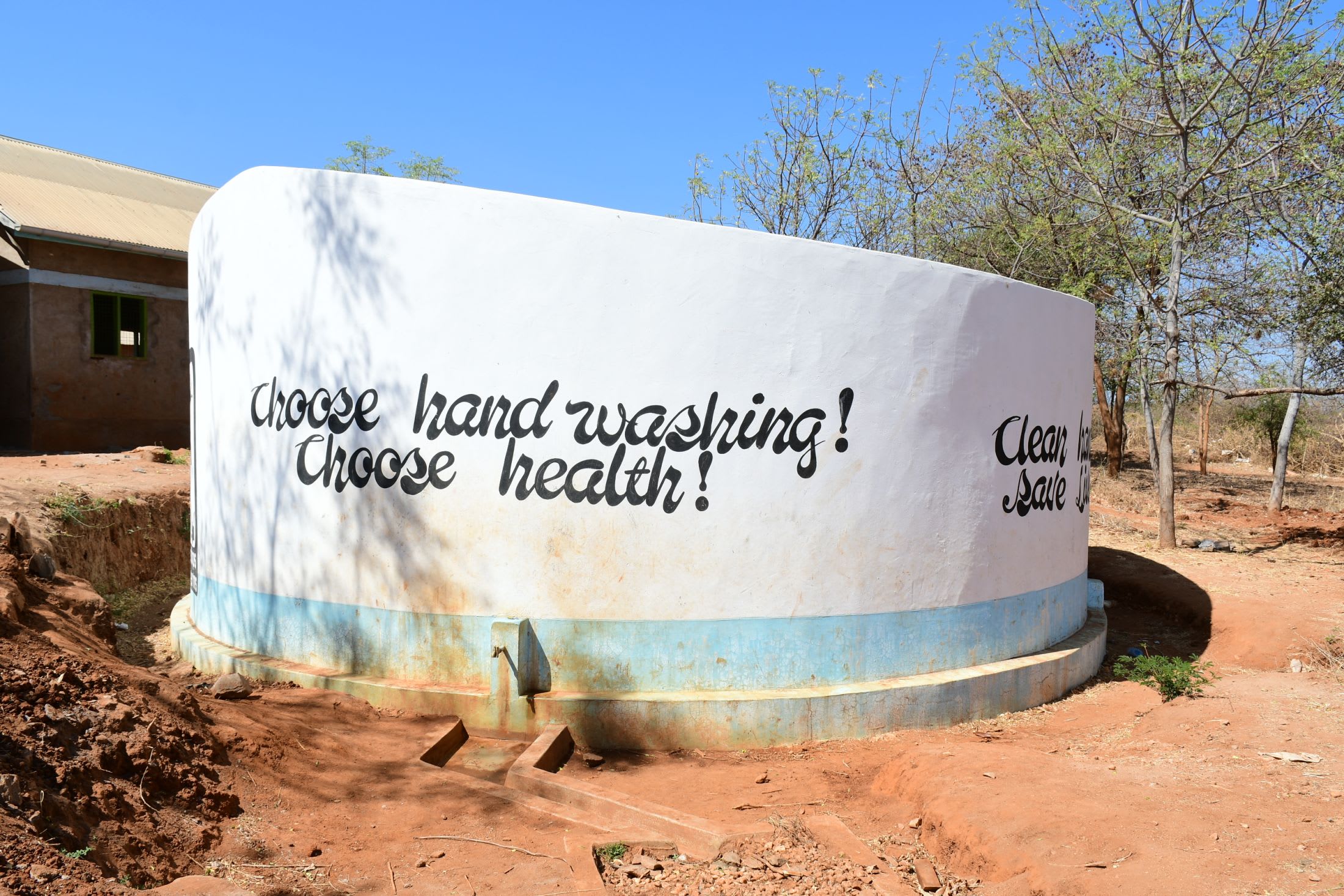
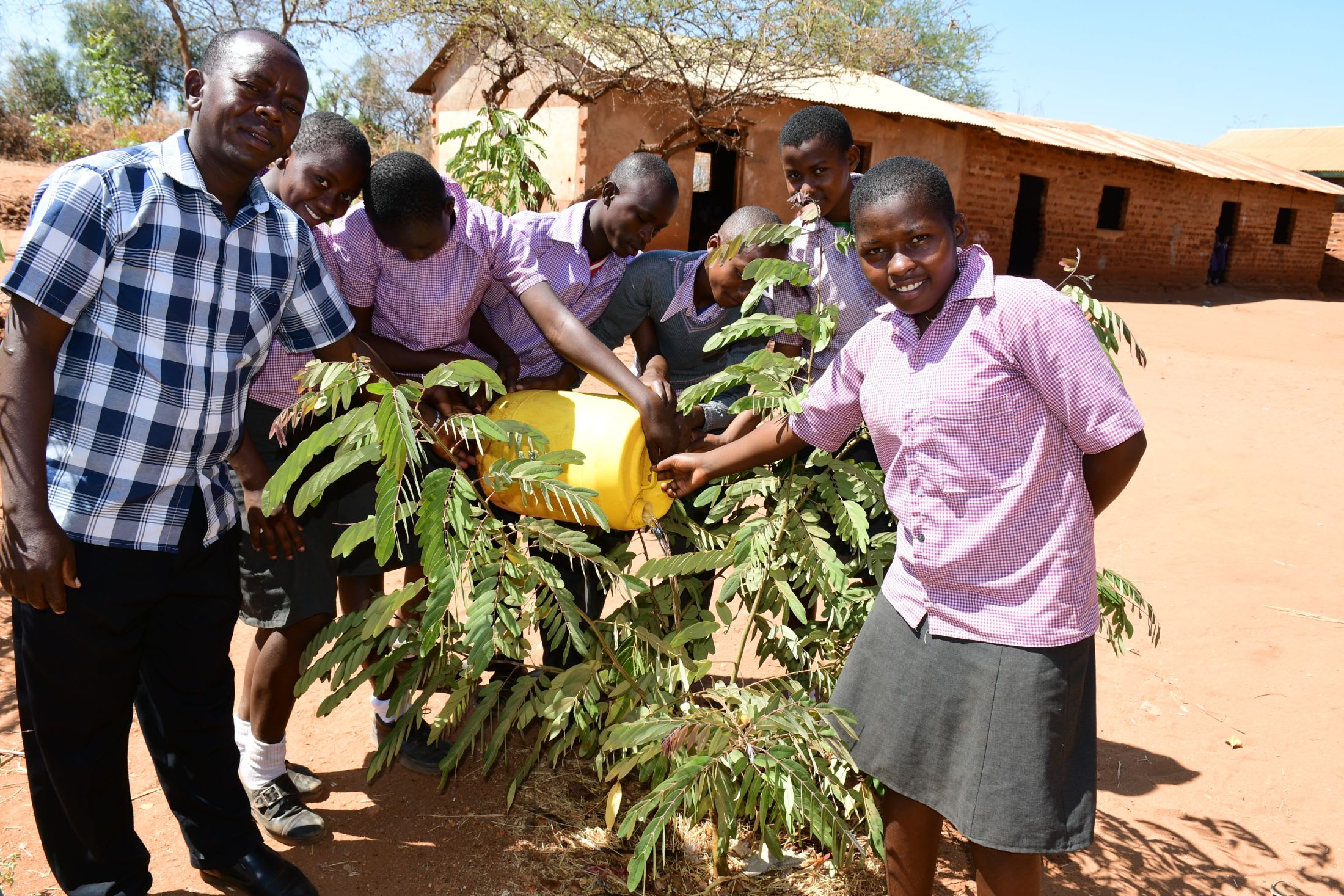
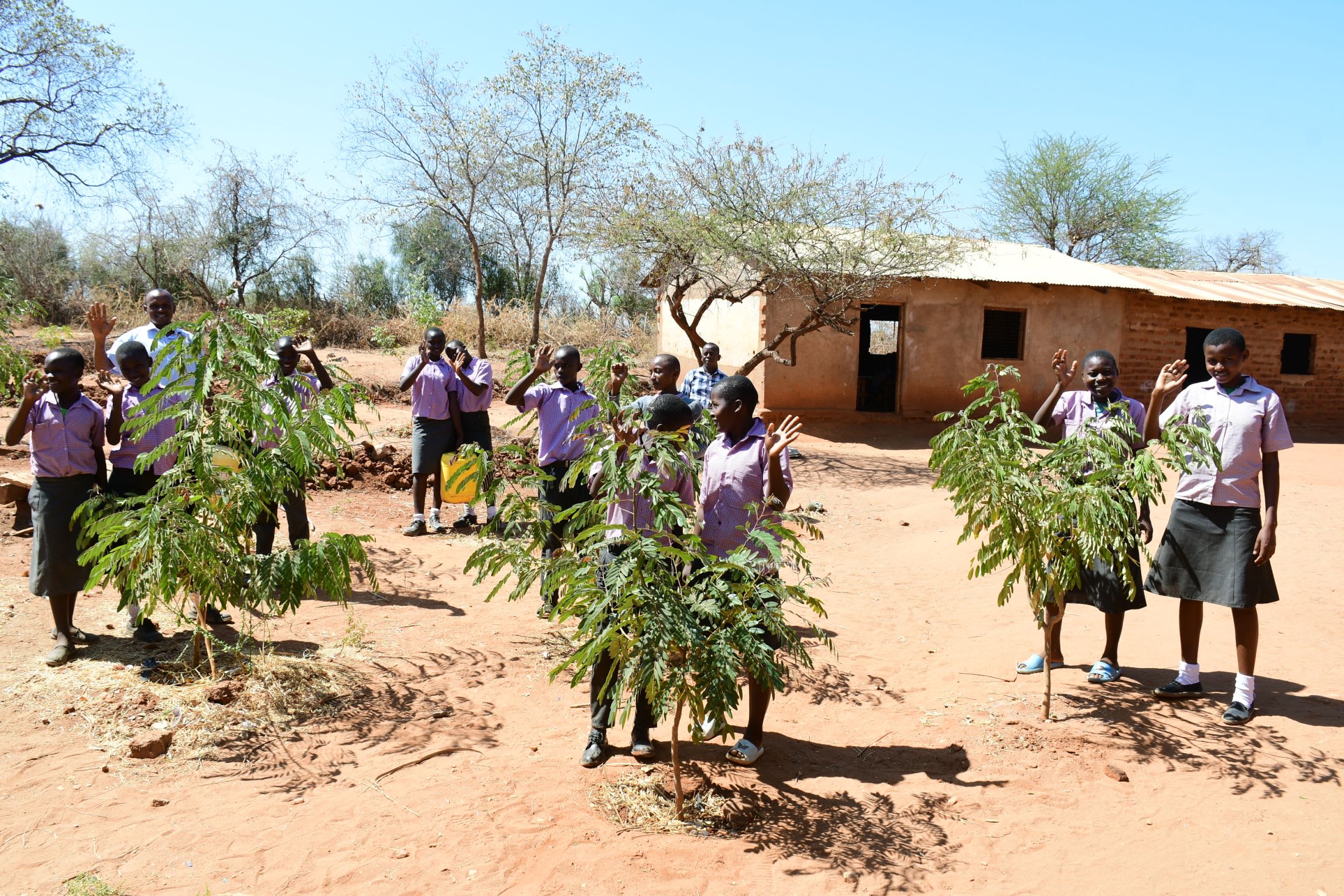

 Rainwater Catchment
Rainwater Catchment
 Rehabilitation Project
Rehabilitation Project










